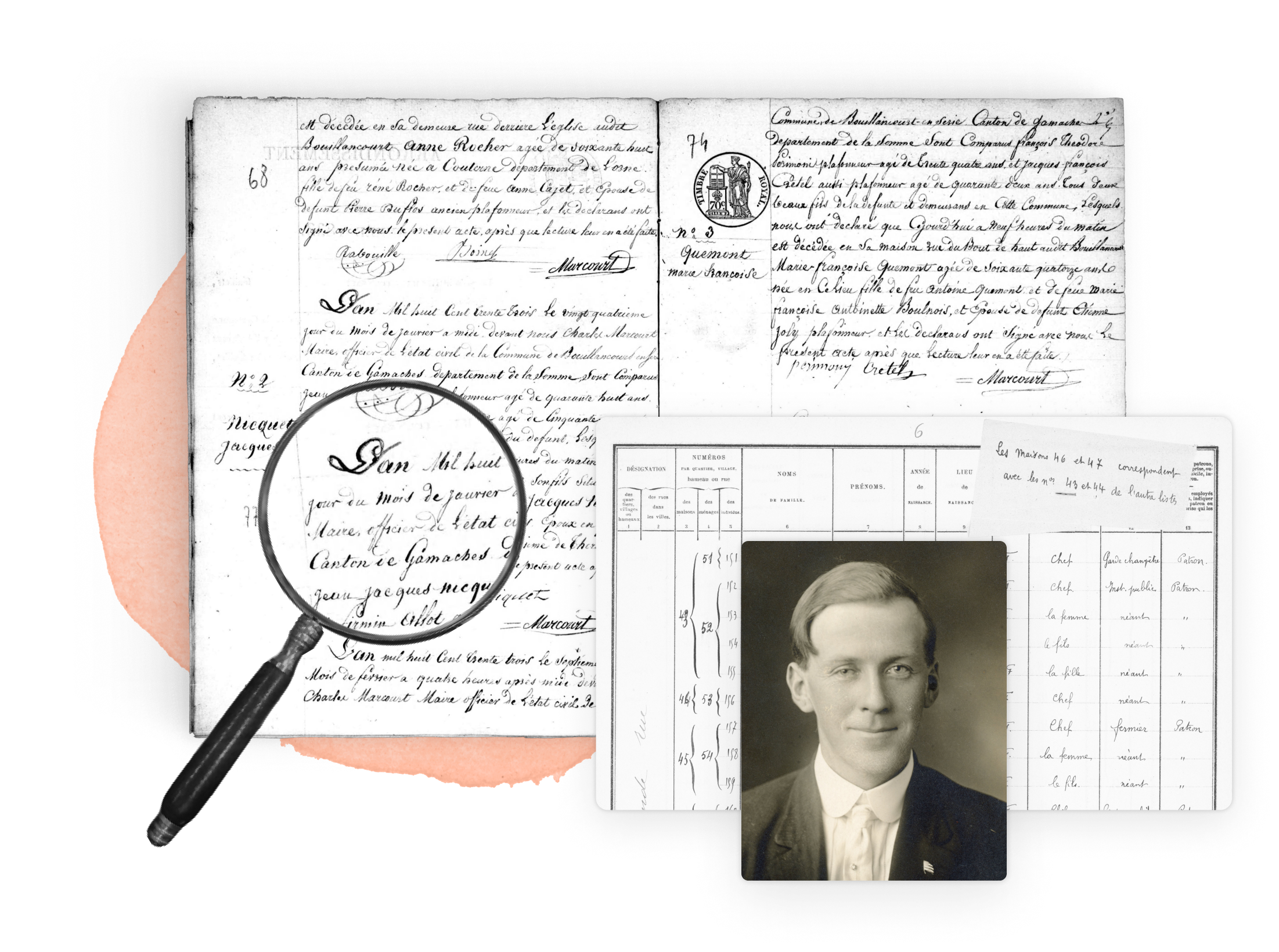City and business directories were published as early as 1742 and listed names of residents and businesses. Usually in alphabetic order, information included names and names of spouses, residential addresses, occupations, names of employers, and more. A directory often included advertisements for local businesses which helped defray the cost of the publication. These directories are filled with clues to help you break down brick walls and better understand your ancestors.
Prior to the invention of the telephone and the telephone book, most US cities and even small towns had a directory listing information on their inhabitants. Even after the telephone became popular, and up through the 1920s and 1930s, many towns continued to publish these directories.
Research your ancestors on MyHeritage
The information available in city directories
When you see the term “directory” for genealogy research, it means much more than an alphabetical list of residents and their addresses. Here are the basic types of information often found in directories related to an ancestor:
- Name
- Spouse / Marital Status
- Occupation
- Address
- Employer
Keep in mind that a directory for a large city such as Buffalo, New York, or Chicago, Illinois will offer more information than a small town directory. However, some small town directories might list residents who died in the previous year and even the ailment suffered or the cause of death.
The basic elements of a city directory

It may take some time for you to understand how information is presented in a city or business directory. Each directory and directory publisher uses a different format. Here is an example from the Brooklyn City and Business Directory, 1870-71, published by Lain & Company (on the right).
For the first entry, the information listed translates as “Duff Aachbild, employed in the milk business, home address on 5th Avenue, corner of 18th Street.”
This can be determined using the table of abbreviations above the listing (here indicating that “h” means “house” and “c” means “corner"), and the Street and Avenue Directory at the end of the general directory.
Abbreviations in city directories

The clue to solving many family history mysteries can be found in the abbreviations within a city directory listing. For most directories, there will be a table of abbreviations listed in the first few pages. The most common abbreviations are:
- Ab. – above (meaning the person could live above a store or business)
- Bd. or Bds. – boards (meaning the person is a lodger or boarder at the address)
- Emp. – employee
- Opp. – location “across” or “opposite” from an address
- Prop. – proprietor
- W. or wd. – widow or widower
Watch for Abbreviations of street names, neighborhoods, neighboring towns, and given names.
You may encounter more than the common abbreviations listed above. Especially for large city directories where an attempt was made to save space and reduce printing costs, you may see a table of abbreviations for a variety of text. Some may not make sense unless you consult the table. Example: Hy for “Henry” and not “highway.”
GenealogyInTime Magazine has an extensive list of directory abbreviations.
Advertisements and their importance for genealogy

Many town or city directories were free or could be purchased at a nominal price. Publishers covered their costs by selling advertising placement. Often you will need to page through ads just to get to the listings, and then you may find ads at the top and bottom of each page.
In most directories, a list of advertisers will appear at the front or the end of the directory. If your ancestor ran a business, check to see if it is listed.
Advertisements can also help us understand how our ancestors lived. What were the prices for basic goods? What were the fashions of the time period? What items were in demand?
Creating timelines and using the F.A.N. Club concept

Very often, information found in a city directory will be “direct” in that it will state a name, occupation, address, etc. But you need to be a sleuth and start using the “indirect” information to harvest those genealogy clues.
Example: city directories are perfect for pinpointing a location for an ancestor in between census years. So for the missing 1890 US Federal Census, a city directory from 1890 or 1891 can solve many issues.
If you have access to several successive years of a city directory, verify the address for the same ancestor. Did they move within the city? Did they move out of the city? Then consider plotting the information along a timeline, including residence, occupation and place of employment.
In addition, if your ancestor owned a home and then moved to a new address, who owned the home previously, or who purchased the home from your ancestor?
The City Directories collection at MyHeritage has a unique feature available for most listings allowing you to find others who may have lived at an ancestor’s address.

Locate the address listed in the record, click on the link “See who else lived at this address,” and in the example above for George R. MacEntee, we find the following people also lived at 4 North Plank Road, Newburgh, New York:

Could these people be related to George R. MacEntee? One factor of the F.A.N. Club concept (“Friends, Associates and Neighbors”), is that property was often purchased by relatives not strangers.
Tips and tricks for clue gathering with city directories
- Search last name only. The formatting for city directories is different from most records and using a “first name last name” search will prove frustrating.
- Browse images by surname. Make sure you review the entire list of people with the same surname as your ancestor. Check the names against your family tree and you might just be able to fill in some gaps.
- What is the date of the directory? Keep in mind that the information listed in a directory was often collected up to one year PRIOR to the date listed on the cover of the directory. Example: a 1908 directory would most likely show where your ancestor lived in 1907. Check the front/back pages of the directory to see how information was collected.
- Don’t ignore the Table of Contents. You may be surprised at what is actually contained in a directory, and this will be indicated in the table of contents. Often there will be a list of street names, lists of churches, fraternal and charitable organizations, and more.
- Search by address. Once you’ve located an ancestor at a specific address, use that address to search other directories in the same town or city.
- Beware of address changes. Many cities “reconfigured” their address schema or street grid at some point. This usually occurred as cities grew. The address listed in a directory in 1908 may not correspond to the current address.
- Understand the abbreviations. While most abbreviations were standardized across directories (“w” or “wd” for widow, “bd” for “boarder”), check the front or back of the directory for a list of abbreviations for that specific directory.
- Can’t find a directory for your small town? Locate the nearest large town or city and check that directory. Often you will find that smaller villages and hamlets are included in the directories of larger cities.
- Use Google Maps Street View. Once you’ve determined an address, check out the current view on Google Maps Street View and see if the building still exists.
See also
Explore more about city directories
Expand your knowledge about City and Business Directories with these resources:
- City Directories at MyHeritage
- Ask The Expert – Hidden Treasures on MyHeritage City Directories at MyHeritage Knowledge Base
- City Directories: No Town Too Small No Clue Too Little by Thomas Macentee at MyHeritage Knowledge Base
- City Directory Abbreviations at GenealogyInTime Magazine
- DIRECTORIES Almanacs, Businesses, Registers, Street Guides at Don’s List
- Directories at Digital Public Library of America
- Google Books
- Google Maps Street View
- Hathi Trust
- Directories at Internet Archive
- City Directories Online at Library of Congress
- City Directories on Microfilm at Library of Congress
- Online Historical Directories
- Real Estate Listings at Zillow
- Genealogy Cheat Sheets by Thomas MacEntee at Genealogy Bargains Blog


